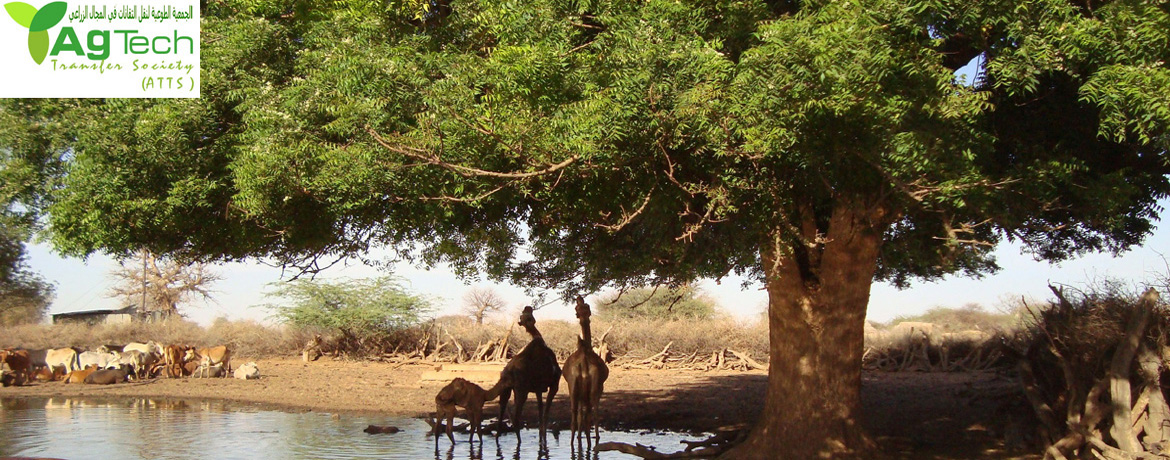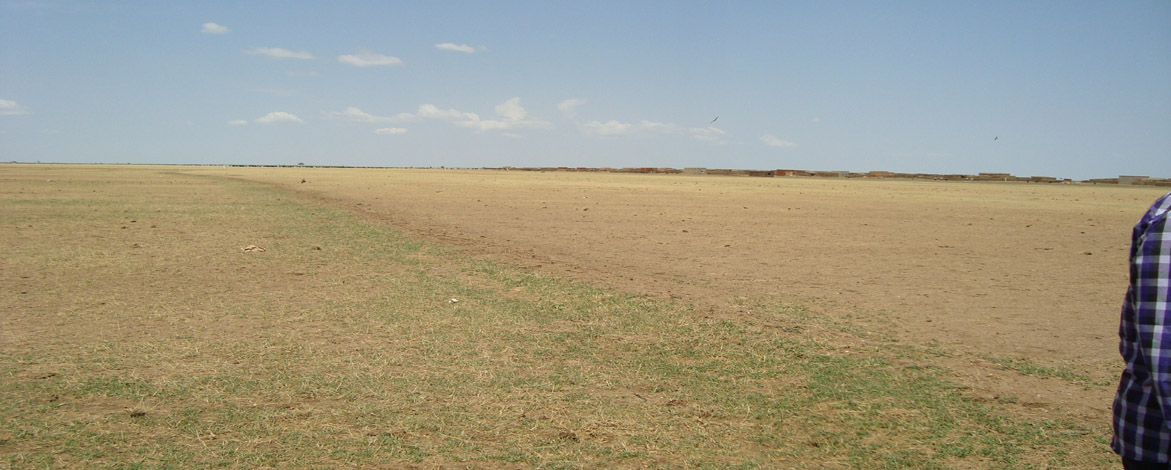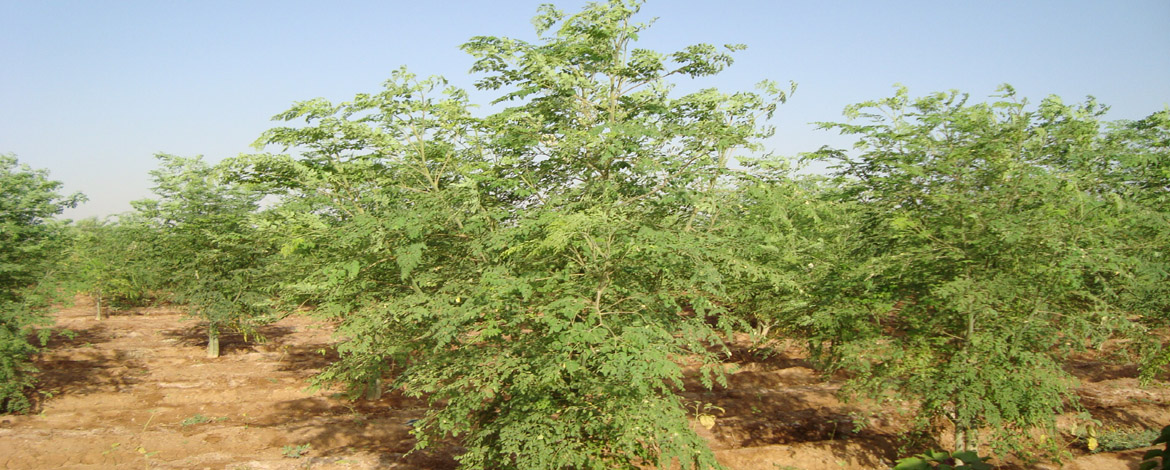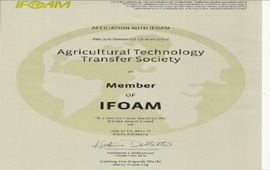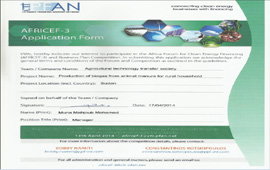Agricultural Technology Transfer Society (ATTS)
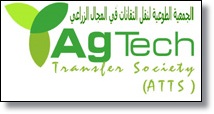 ATTS is non-governmental organization accredited by the Ministry of Humanitarian Affairs in the Sudan according to the work permit No.2234 dated January 21st 2009. The members are scientists, professors and researchers with common interest in the exploitation of research and modern agricultural technologies to uplift productivity of the agricultural sector of the Sudan.
ATTS is non-governmental organization accredited by the Ministry of Humanitarian Affairs in the Sudan according to the work permit No.2234 dated January 21st 2009. The members are scientists, professors and researchers with common interest in the exploitation of research and modern agricultural technologies to uplift productivity of the agricultural sector of the Sudan.
Vision:
Attainment of food security in Sudan through availing appropriate technologies
Mission:
Improve research and development (R&D) options to reduce rural poverty and vulnerability.
Goals
1- Develop and promote affordable and sustainable soil, water, crop and nutrient management options and integrated approaches to watershed management;
2. Identify and promote options for systems diversification (high-value crops, trees and livestock) to improve rural livelihood security;
3. Enhance capacity of R&D partners
ATTS Activities
1- Hand-on-work training in animal technologies.
Establish good practices of farm management.
2-
Provide trainees from vulnerable sections of the society with tools and other necessary equipment
3-
Conduct training whenever possible in the environment of the trainee and establish branches for the Centre in all states.
4-
Make use of national trainers and co-opt foreign expertise when local staff in certain specializations is not available.
5-
Conduct training using local dialects if trainees are unable to understand the basic languages of training in either Arabic or English languages
6-
Contact civil society organizations, professional associations, chambers of commerce, ministries, institutions, companies and other bodies to pay training fees for poor social groups.
7-
Contact international donors and international charity organizations to fund the training of some social groups that may not be able to pay the bill of training.
8-
Set up workshops and symposiums related to the achievement of the objectives of ATTS
9-
Consolidate and promote relations between the ATTS and other similar NGOs, and educational institutions
10-
Provide internet services for agricultural supporting systems for local and international investors in agriculture
11-
Organizes workshops, seminars and forums in hot environmental issues e.g.; organic farming, clean energy, and climate change
ATTS Membership
1-ATTS is a member of National Designated Authority (DNA) at the higher council for Environment and Natural Resources (HCENR) of the Ministry of Environment, ATTS help in selection of projects proposed as clean energy pertaining to GHG emission reduction (attached).
2- ATTS is a member in 4 technical groups at FAO, FSL sector (natural resource management, animal production, crop production, nutrition).
3- ATTS is a member in an international climate technology centre and network (CTCN), exchanging experience in appropriate technology transfer and making benefits of training and incubator offered by CTCN (attached).
4- ATTS is a member of the international federation organic movement (IFOAM) you can refer to directory of IFOAM affiliates 2015.
5- Organization for women in science for the developing world –Sudan National Chapter
6- Membership is to be completed with the Horn of Africa, Sudan chapter
ATTS Projects Gallery
Clean Devlopment Mechanism CDM
INNOVATIVE PRIZE FOR AFRICA
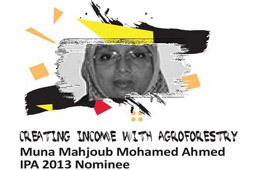
 ATTS was chosen among 10 winners of the innovative prize for Africa (IPA) for the year 2013 for implementing successful agroforesty (moringa/jatrofa )model. The celebration was took place in Cape Town (South Africa) on May 7th 2013. For more information on this event visit the IPA_Digital Magazine p30/31 website:-
.
ATTS was chosen among 10 winners of the innovative prize for Africa (IPA) for the year 2013 for implementing successful agroforesty (moringa/jatrofa )model. The celebration was took place in Cape Town (South Africa) on May 7th 2013. For more information on this event visit the IPA_Digital Magazine p30/31 website:-
.
Target groups
 Small stake holders in the agricultural sector (farmers, village stock kepers, pastoralists).
Small stake holders in the agricultural sector (farmers, village stock kepers, pastoralists).
Women, especially in rural areas.
Basic educational drop outs.
Displaced persons as a result of famine and civil unrest.
Unemployed university graduates.
Productive families program.
Retired civil servants and retired military staff.
Employees of civil service, army, police and prison force.
Workers in slaughterhouses, meat, milk processing and ternary plants.
Workers in animal production and agricultural farms.
Selected individuals with traditional knowledge.
Trainers of livestock and agricultural technologies.
Laboratory technicians and attendants, and quality control staff.
Researchers in the fields of agriculture.
Graduates of animal production, veterinary and agricultural colleges.
Water Technologies
 Some technologies suitable for smallholders include:
Some technologies suitable for smallholders include:
Low-cost drip irrigation: Decreases in water use range from 40 to 80 per cent compared to with traditional surface irrigation systems.
Bagging water for irrigation. Low-cost plastic water tanks used to store runoff water collected during the rainy season from small catchments or water from perennial wells or streams for use in the dry season.
Groundwater extraction: Hand pumps; treadle pumps; wells; boreholes; open galleries.
Water harvesting: Contour bundling; check dams; gully plugs; dykes; rooftop; cisterns; surface ponds; fog harvesting
Water storage: Dams and reservoirs; wetlands; aquifers; ponds and tanks
Soil water conservation: Zero-tillage; crop residue management; crop rotation; compost; green manure; mulches; clays
Beneficial Biological Organisms
 Soil microorganisms can help plants to absorb nutrients. The utility of these microorganisms can be enhanced by selecting the most efficient, culturing them and adding them to soils directly or through seeds. The cultured microorganisms packed in carrier material for easy application in the field are called bio-fertilizers. .
Soil microorganisms can help plants to absorb nutrients. The utility of these microorganisms can be enhanced by selecting the most efficient, culturing them and adding them to soils directly or through seeds. The cultured microorganisms packed in carrier material for easy application in the field are called bio-fertilizers. .
Biotechnology
a. Tissue culture and micro-propagation
The plant tissue culture technique requires a sterile workplace, a nursery/greenhouse, and trained manpower. It is an important technology for the production of disease-free, high quality planting material and the rapid production of many uniform plants.
b. The potential of GM crops and their adoption
Genetically modified (GM) crops are often held up as the solution to yield deficits as well as offering other benefits such as improved appearance, taste and nutritional quality, drought tolerance, and insect and disease resistance. The most common trait being introduced into GM crops is herbicide tolerance; this trait is now found in about 80 per cent of all GM crops planted worldwide. Sorghum is food crop from the grass family have its genome fully sequenced. Combining the new knowledge on the sorghum genome sequence with expertise on molecular-marker assisted crop selection and breeding could result in the development of improved sorghum varieties and hybrids with improved drought tolerance or disease resistance.
c. Developing disease-resistant crops.
Post-Harvest Technologies
 Reducing post-harvest losses and enhancing shelf life, Adding value for perishable products. Crop losses could be reduced through the application of readily available technologies and input management using minimal additional resources. Developing post-harvest technologies and innovation therefore provides considerable opportunities for food security, trade and economic growth. Overcoming the perishability of the crops, enhancing their nutritional value and adding additional economic value locally through agricultural processing is one important way to increasing food security.
.
Reducing post-harvest losses and enhancing shelf life, Adding value for perishable products. Crop losses could be reduced through the application of readily available technologies and input management using minimal additional resources. Developing post-harvest technologies and innovation therefore provides considerable opportunities for food security, trade and economic growth. Overcoming the perishability of the crops, enhancing their nutritional value and adding additional economic value locally through agricultural processing is one important way to increasing food security.
.
